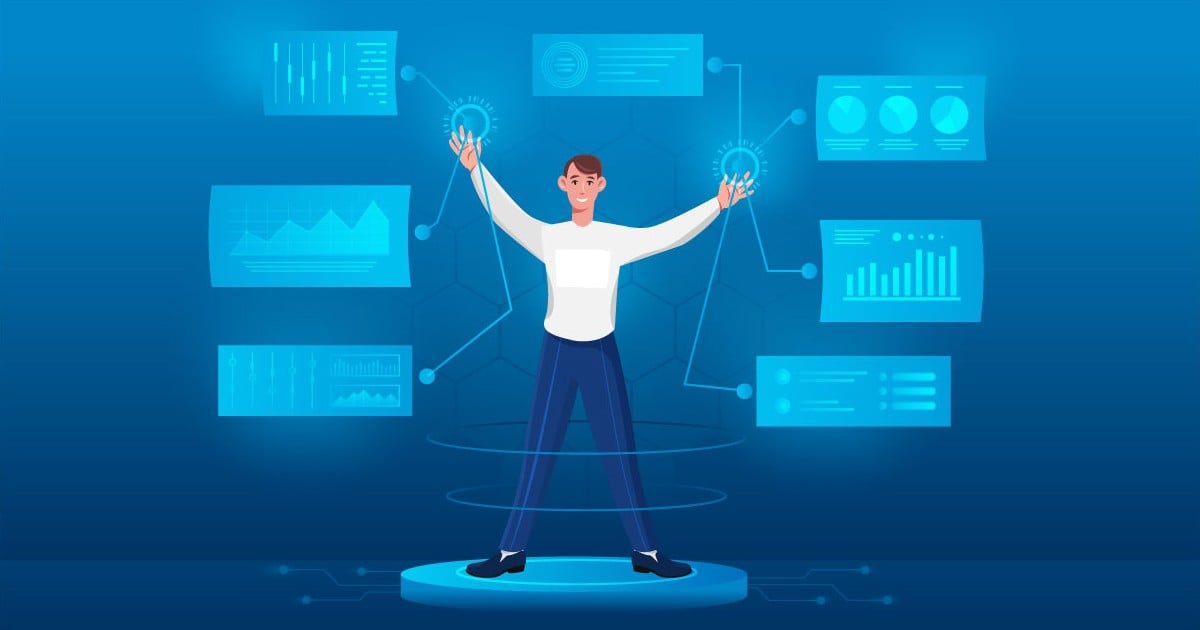In the eCommerce world, customer lifetime value (CLV) is one of the most important metrics for determining the success of a business. CLV represents the total amount of money a customer is expected to spend on a business over their lifetime as a customer. A high CLV indicates that customers are satisfied with the products and services offered and are likely to continue making purchases in the future.
According to Metrilo research, the average CLV across the eCommerce industry is $168. This number can vary greatly depending on the business and industry, but it is a good benchmark to start measuring against. By increasing CLV, eCommerce you can increase your profitability and stability in the long-term.
Note: Another metric that is important to growth is Marketing Efficiency Ratio (MER) – read about why here.
What is Customer Lifetime Value for eCommerce?
Customer lifetime value is calculated by multiplying the average purchase value by the number of purchases a customer makes over their lifetime. The calculation takes into account the cost of acquiring a customer, the cost of retaining a customer, and the expected profit margin. The result is an estimate of the total value a customer is expected to bring to a business over the course of their relationship.
Why is maximizing customer lifetime value so important for eCommerce businesses? Simply put, it increases profitability. By focusing on CLV, eCommerce businesses can invest in strategies that increase customer loyalty and satisfaction. This in turn leads to repeat purchases, and therefore, a higher CLV. Additionally, a high CLV also means that a business has a stable customer base that is less likely to be affected by market fluctuations and competition.
So, how can eCommerce businesses maximize customer lifetime value? Focus on these five areas, and you'll be on your way to more profitable customers.
1. Provide a Personalized eCommerce Shopping Experience
Personalization is crucial in today's eCommerce world. Personalized product recommendations have a conversion rate that is up to three times higher than generic recommendations. By providing customers with a personalized shopping experience, businesses can increase customer satisfaction and loyalty.
Try adding personalization in these areas:
- Recommendations: Use customer data, such as past purchases and browsing history, to provide personalized product recommendations.
- Email campaigns: Send targeted email campaigns based on customer behavior and preferences.
- Product pages: Customize product pages for individual customers based on their behavior and preferences.
- Promotions: Offer personalized promotions based on customer behavior and preferences.
- Product search: Offer personalized search results based on customer behavior and preferences.
- Product bundles: Offer personalized product bundles based on customer behavior and preferences.
- Wish lists: Allow customers to create personalized wish lists that they can access and modify at any time.
2. Useful & Helpful Customer Engagement
eCommerce businesses should strive to engage with their customers on a regular basis. This can be done through email newsletters, social media, or in-person events. Engaging with customers helps to build a relationship and increase customer loyalty. Data shows that engaged customers have a CLV that is up to four times higher than customers who are not engaged.
We recommend starting with a simple monthly or bi-weekly newsletter that goes out to your customer base. You can highlight products and promotions as well as give your perspective on the industry at large. Don't forget to personalize where possible. Segment your customers by product category and highlight products that relate to those they've already purchased.
Also, think about hiring or contracting a social media manager to keep your brand and products in front of your customers when they are browsing the web.
Talk to a Finch CLV Expert
3. Provide Excellent Customer Service
According to Forbes, customers are willing to spend 17% more with a company that offers excellent customer service. Customers should feel valued and appreciated, and their concerns should be addressed quickly and effectively.
eCommerce Customer Support Best Practices:
- Offer multiple channels for customer support: Customers should be able to reach out to your business through a variety of channels including email, live chat, phone and social media.
- Make response times a priority: Respond to customer inquiries and complaints in a timely manner. Aim to answer inquiries within 24 hours and provide real-time support for urgent matters.
- Provide clear information on product details and policies: Ensure that product descriptions, shipping and return policies are clear and easily accessible on your website.
- Encourage customer feedback: Encourage customers to share their thoughts and experiences by providing a feedback form or survey on your website.
- Train your customer service team: Invest in regular training for your customer service team to ensure they are equipped with the right skills and knowledge to handle customer inquiries effectively.
- Use technology to streamline processes: Implement technology solutions, such as an integrated CRM system, to streamline customer service processes and make it easier for customers to get the help they need.
- Continuously evaluate and improve: Regularly assess your customer service performance and identify areas for improvement. Make changes based on customer feedback and monitor their impact on customer satisfaction.
4. Implement Customer Loyalty Programs
Loyalty programs are a great way to increase customer lifetime value. 82% of customers with a high emotional engagement towards a brand will always buy from it and these customers have a 306% higher CLV and will likely recommend the brand to others. More customer loyalty data here.
By offering rewards and incentives for repeat purchases, businesses can encourage customers to make more purchases and increase their CLV.
5. Your Products Have to be Worth Buying Again
The quality of products offered is vitally important to giving all of the above tactics a chance at increasing CLV. Simply put, you can do everything else right, but if your products aren't good, no one will come back to buy them again. By offering high-quality products, eCommerce businesses can increase customer satisfaction and encourage repeat purchases.
If you are missing the mark on product quality, this might be the most painful place to improve. You'll need to evaluate your supply chain and the costs associated with improving quality. But at the end of the day, it will be worth it and your brand will be able to sustain profitable growth.
Maximizing CLV is the key to eCommerce success. By focusing on CLV, eCommerce businesses can invest in strategies that increase customer loyalty and satisfaction, leading to increased profitability and stability. By personalizing the shopping experience, engaging with customers, providing excellent customer service, offering loyalty programs, and maintaining product quality, eCommerce businesses can maximize their CLV and achieve long-term success.






